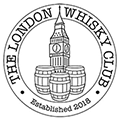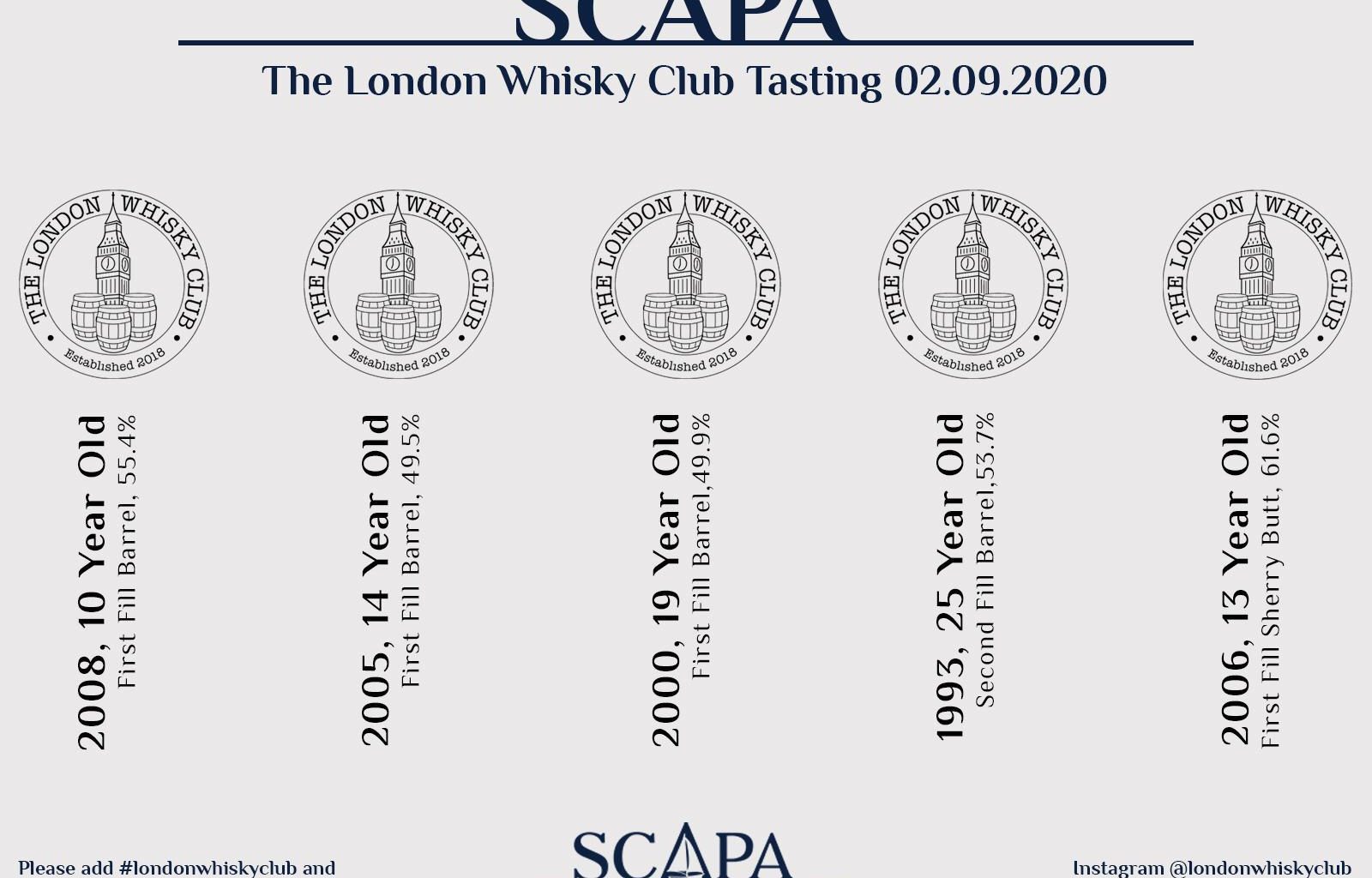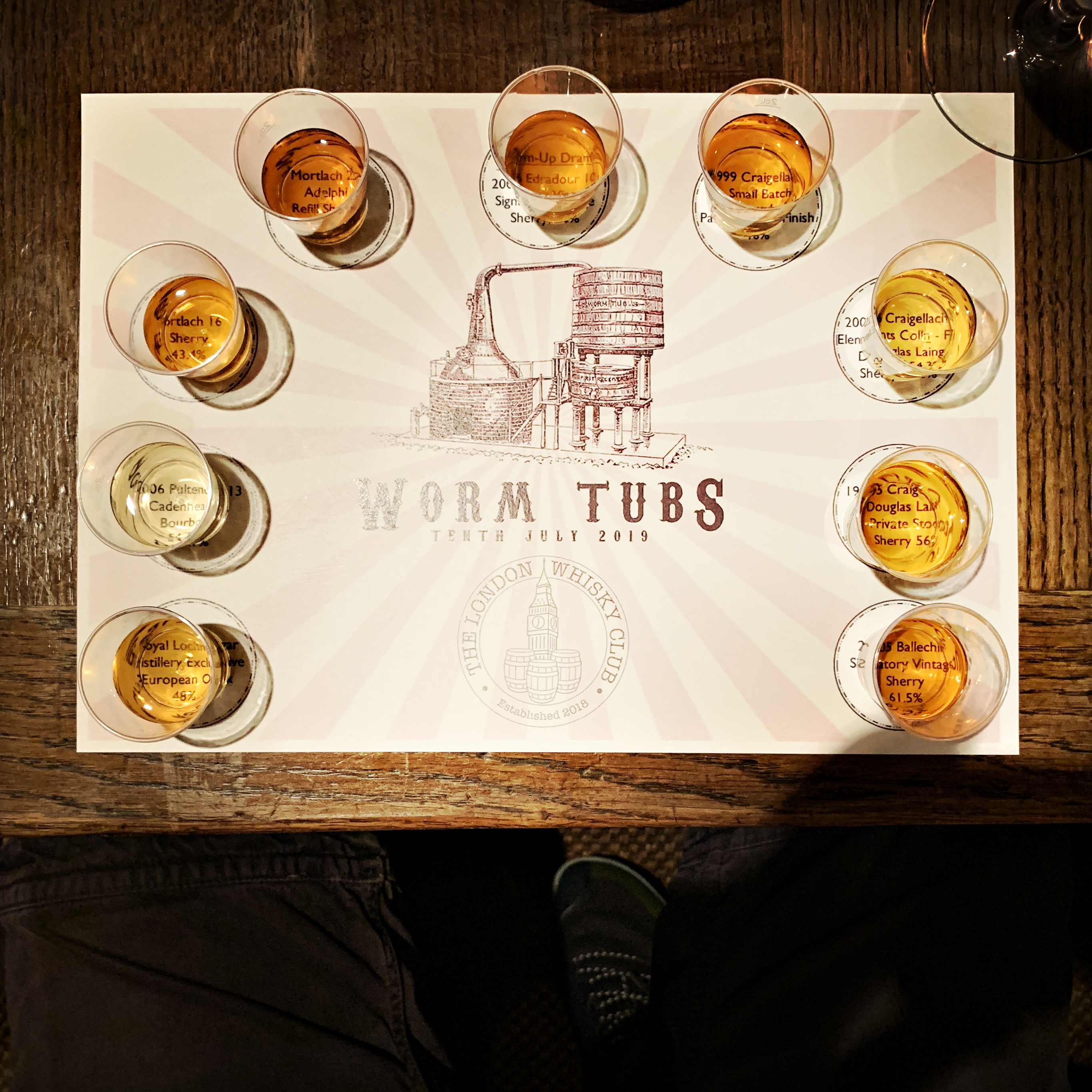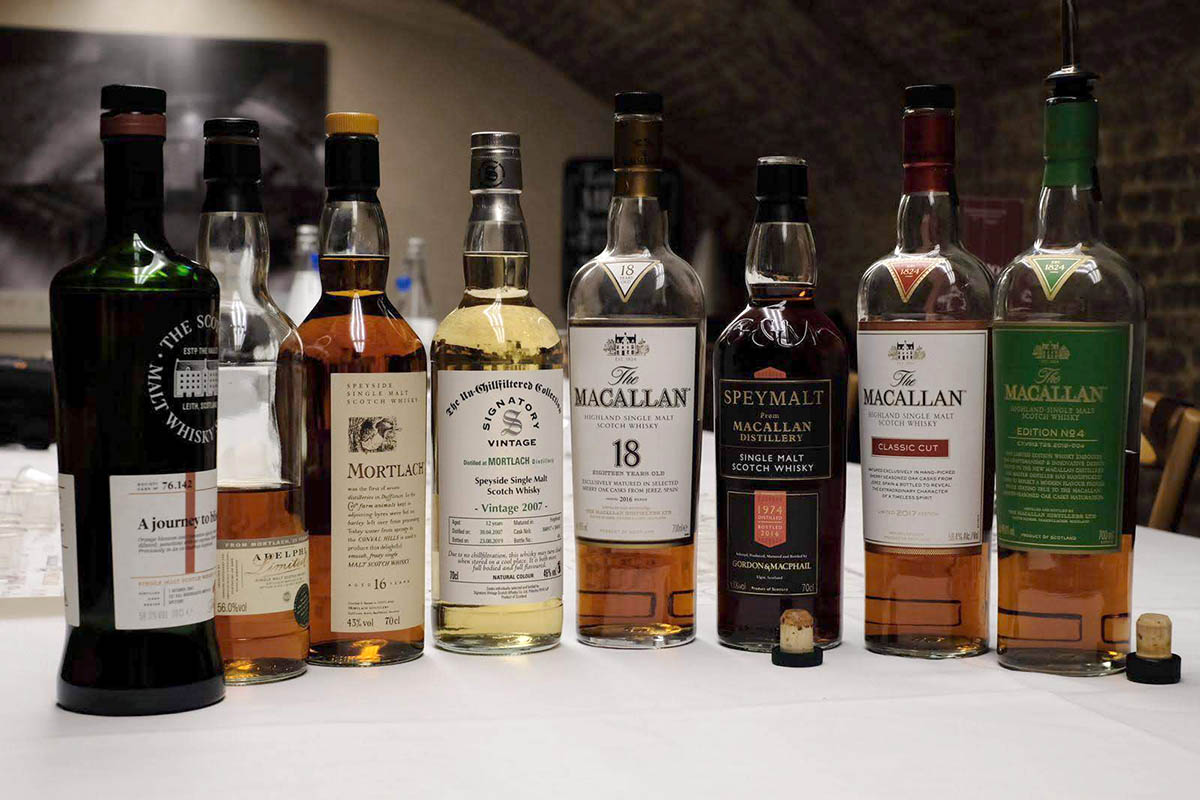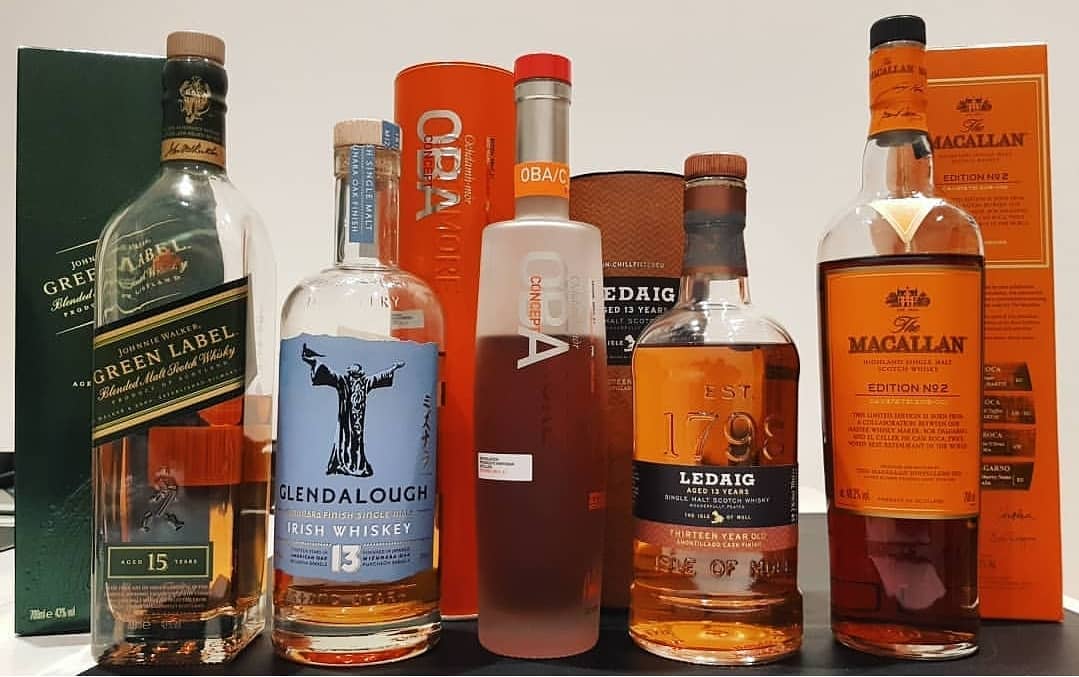Write up by Luke Jones…
This week’s tasting from TLWC takes us up the A9 and on a little bit further and then a little bit more, all the way to Orkney. That’s right – it’s Scapa!
Located on the coast overlooking Scapa Flow, this is an Island malt like no other. It’s unpeated, fruity and floral, and for those that haven’t tried it as a single malt may very well experienced it as key component in a number of blends. In fact, most of the whisky goes for blending and in particular Ballentines 17. Of course, the single malt side of business gets first pick of all the spirit for its own bottling as well as the NAS whisky.
I for one am not overly familiar with the offerings outside what’s available at the supermarkets and its fair to say we have a number of fan boys in the house tonight, so we are in for a good night all around. There are 5 exclusive single casks, part of the Distillery reserve collection (DRC), that are only available for those who make the long journey to the distillery and purchase from the Visitors Centre. Tristan Campbell, the International Brand Ambassador for Chivas Regal will be taking us through these rare and exciting whiskies.
Before we kick off and tuck into the drams, a little background on the distillery and Scapa itself. Scapa is a single malt which takes flavours from all the extreme elements of Orkney. Only water from the local springs is used and the local climate fairs well for Angel’s Share which is roughly 2% of every batch. Many cities or areas claim that they can experience all 4 seasons in a day, but few can claim to experience all 4 in an hour like Scapa does. Unlike other Island distilleries no peat is used to dry the malt which is what gives the whisky its sweet and tropical flavour. All the whisky is distilled by a single pair of stills. Installed in 1959, it has a wider, taller neck which results in a richer, fruitier new make spirit. The new make spirit is typically racked into first-fill American Oak casks which gives the single malt its vanilla taste. Despite there only being 8,700 residents in Orkney there are 2 distilleries with Highland Park being the other.
Our exciting line-up for the night’s tasting:
- Scapa 2008 10Yr – First Fill Barrel – 55.4%
- Scapa 2005 14Yr – First Fill Barrel – 49.5%
- Scapa 2000 19Yr – First Fill Barrel – 49.9%
- Scapa 1993 25Yr – Second Fill Barrel – 53.7%
- Scapa 2006 13Yr – First Fill Sherry Butt – 61.6%

Up first is Scapa 2008 10Yr.
This is cask 2681 which is a single cask, first fill American oak barrel of 190 litres. Of course, its non-chill filtered and one of only 348 bottles. No colouring is added and that’s clear to see with its lovely light golden colour. When nosing the new make spirit, the master distillers are looking for the pineapple notes that we typically associate with Scapa. The younger the whisky, the more we expect to have the pineapple and fruity notes. The Master distillers will add water (typically it will be diluted down to 20%.) for nosing, tasting and tasting notes to ensure the analysis is being performed at same strength. Also, it helps to ensure you don’t dull all taste buds.
This whisky is very much as expected, fresh, fruity maybe still a hint spirit but a few drops of water helps to bring out the more delicate floral notes.
Dram 2 of the night is Scapa 2005 14Yr.
Cask number 101, distilled 3/2/2005. It’s the same cask type as dram one, first fill American oak so again we are expecting the flavours from the cask to come through. On first taste its noticeable smooth and very drinkable for cask strength. While we sip on the dram Tristan provides a little more background to the distillery.
Back in 2005 the distillery was still operating only 5 days a week and had 3 still men. It wasn’t until 2014 that it moved to full capacity i.e. 7 days a week. It’s still a relatively small distillery with an extensive refurbishment program in 2019 increasing capacity to 1.25 million litres per year up from 1 million. Compare these numbers to the likes of Glenlivet who turn out 21 million litres and Glenfiddich who are about to increase to 23/24 million litres. This is one of the reasons, not everything bottled as Scapa has been aged in Scapa. There just isn’t the storage capacity. As the distillery increased output to 1.25 million litres, storage capacity didn’t increase in line. Therefore, stainless steel tankers leave once a week to do the filling and storage on mainland Scotland.
Scapa still operates as a manual distillery with Glentauchers being the only other manual distillery in the portfolio of Chivas distilleries. And it’s the Glentauchers distillery where all the still men go to train because there is still a need to understand how to operate manually for times when the automatic system goes down. Computer systems are in place at Scapa but it’s only for monitoring and reporting purposes with everything else still being done by hand.
Next dram was Scapa 2000 19Yr
Although the whisky has not been in the cask long enough to lose all the distillery notes, there is still a lot of cask influence coming through. Naturally as we start to move up the ages, we get less of the distillery notes. This bottle is from cask 26 and is bottle 267 of 312 which was distilled 28/2/2000 back when the still was operated by Highland Park.
And while we sit down with this dram Tristan talks us through the quality control that these whiskies are subject to. The new make spirit is assessed every single week. This means that the new make is nosed and tasted as well as the casks being subjected to visual inspection to make ensure there are no leaks. Furthermore, there are random samples pulled at differing intervals. As well as the regular testing, every single cask aged for more than 12 years is sent to the infamous “bowling alley”. This is where the whiskies are all lined to be nosed and tasted by all master blenders to pick out the casks that could be slightly off or not quite right. Of course, this is also when the standout or exceptional casks will be identified and put aside for the DRC range. After the vatting they are nosed yet again and finally once more when deemed ready for bottling.
The penultimate dram for the night is Scapa 1993 25Yr. Coming from cask 1560, distilled 25/11/1993 and aged in a second fill barrel.
The first nose and taste suggest this is less balanced than the 19Yr and there are less distillery notes and more cask influence. Given how influential the casks are to the process, the cask quality is paramount. Therefore, Scapa track the casks throughout its inventory. Years ago this was a very difficult task but keeping up with newer, more modern techniques, bar code systems have been implemented. Interestingly Chivas have more casks than there are people in Scotland so there a lot of tracking required.
Despite the large number of casks, a sherry cask Scapa is still a rarity so the ones that are out there are likely to have been experiments or when Scapa have encountered issues with the American oak casks and had to change tact. More often than not these casks are stored at “the back of the shed” and don’t often see the light of day. This is where we go for the last dram of the night.
Scapa 2006 13Yr, a first fill sherry butt, cask 687 and distilled 22/3/2006.
Straight away you can see the deep, dark colour in the glass that comes from the cask. Despite this one being aged less than some of the other whiskies on show tonight the cask influence is very apparent. Again, the key to a good sherried whisky is a high-quality sherry cask. Scapa works closely with the top bodegas in Spain to ensure it’s only the highest quality casks are. The spirit doesn’t need a lot of time in the cask to take on the deep colours and dried forest fruits notes. It’s fair to say this is not a typical Scapa but it’s something different and it does show what Scapa can do in different woods.
Dram of the night: maybe a turn up for the books but the unanimous winner was the 2000 19Yr followed by 2005 14Yr and then the 1993 25Yr. It looks like the younger whisky doesn’t have time to take on enough of the cask influence, the older whisky has lost too much of its distillery notes leaving the 19Yr as the true balance of distillery notes and cask influence.
Tasting notes
Scapa 2008 10Yr – First Fill Barrel – 55.4%
Nose: This is very fresh and vibrant. Pineapple and tropical fruit. The vanilla, and creamy notes coming from the cask with a delicate floral ending.
Taste: A little raw and reminds me of a pineapple tart and custard topped with salt rather than the usual sugar and subtle hints of cherry.
Scapa 2005 14Yr – First Fill Barrel – 49.5%
Nose: Sweet and fruity as we have come to expect from a younger Scapa. Pear drops, boiled sweets, pineapple, vanilla and sweet cream almost like condensed milk.
Taste: A little bit of spice on the tongue and lips with the salted butter pastry notes coming through strong. Once the spice dies down, we are left with the nutty tones of almonds and coconut.
Scapa 2000 19Yr – First Fill Barrel – 49.9%
Nose: Again the sweet notes are prominent. Its bright, ripe with tropical notes. The theme of vanilla lives on but now it’s more of a fudge flavour.
Taste: Very smooth on the tongue much like soft vanilla ice-cream. Caramelised pears, apple, coconut, peanuts and maybe a hint of dark chocolate.
Scapa 1993 25Yr – Second Fill Barrel – 53.7%
Nose: A lot richer than the other so far and a stronger spice. Its quite unusual for American oak but still fruity.
Palette: Less distillery notes coming through now. A light touch of pineapple but nothing like the others. There is a creamy, long finish and leaves quite an oil woody taste.
Scapa 2006 13Yr – First Fill Sherry Butt – 61.6%
Nose: As you can expect from a Sherry cask there is lots of spice, sweet cinnamon, dark chocolate or cocoa. And of course, the newly polished dusty leather armchair smell.
Taste: Dried forest fruit, maybe a little bit of pineapple but more of the dates, figs and raisins coming through with a bitter and waxy finish.
—————————————————————————–
The next club tasting is a big one. We can finally offer a hybrid tasting with some participants in person and the others partaking virtually. Its the vertical Ardbeg tasting with our very own Andy “Ardbaggie” Purslow.
